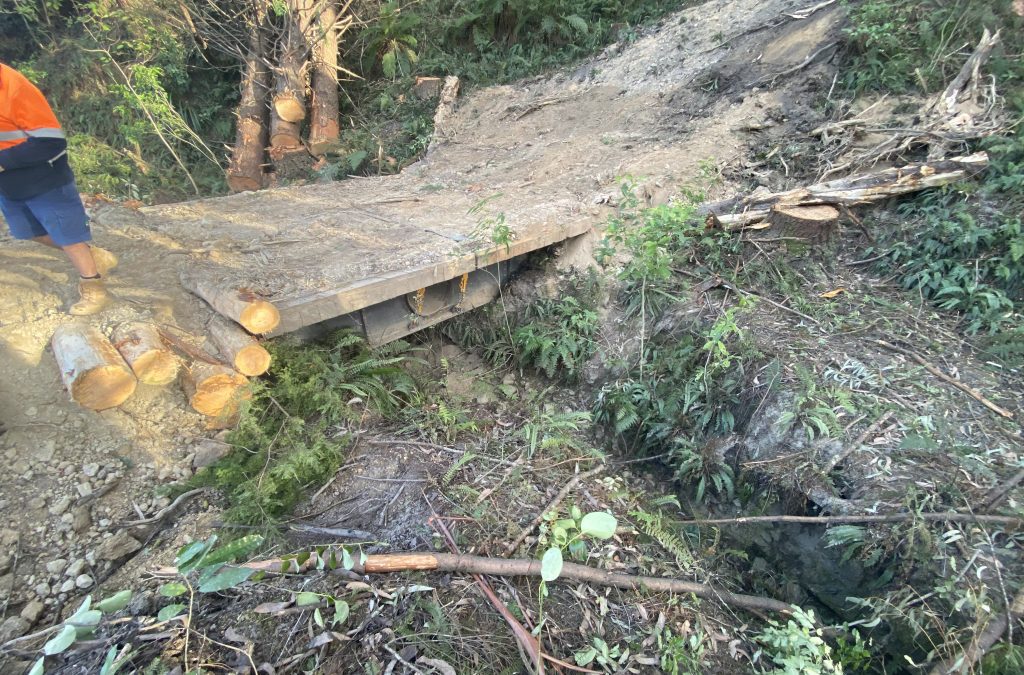We have constructed and tested the first of two transportable, temporary crossing structures planned for use in our ground-based logging operations.
The aim of these crossings is to minimise stream bed disturbance when extracting stems across waterways. Traditionally, logging crews have created a temporary river crossing by laying culverts in the riverbed and covering them with logs, which is a permitted activity under the NES-CF. However, this method can lead to stream bed disturbance and sediment mobilisation, degrading water quality and fish habitat.
Our temporary crossing structures aim to minimise stream-bed disturbance, reducing it to a small footprint in the stream bed – or ideally causing no disturbance at all – while allowing water to flow freely through or under the structure.


Recent Comments